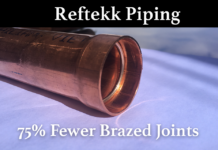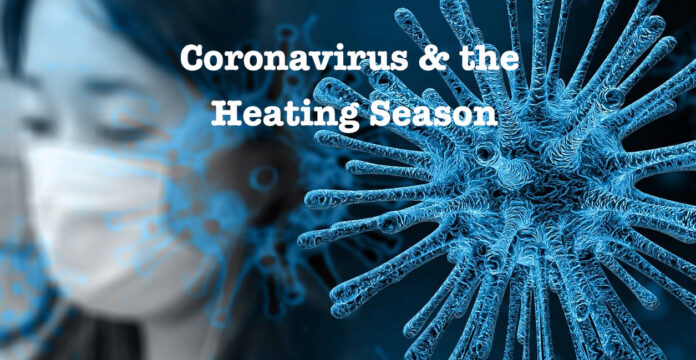Is your building too dry inside, thereby providing life sustaining low humidity levels for the Coronavirus or other viruses to live?
Researchers at Yale identify low Relative Humidity as a potential culprit in sustaining the life of the coronavirus indoors. Your heater maybe contributing to the occupants risk of seasonal viruses.
(RH) Relative Humidity is the amount of water vapor present in the air expressed as a percentage of the amount needed for saturation at the same temperature. If both of the rooms are at the same temperature as shown in the image below, one is approaching a very low RH, and the other is in the sweet spot at 50% Relative Humidity according to Yale scientist.
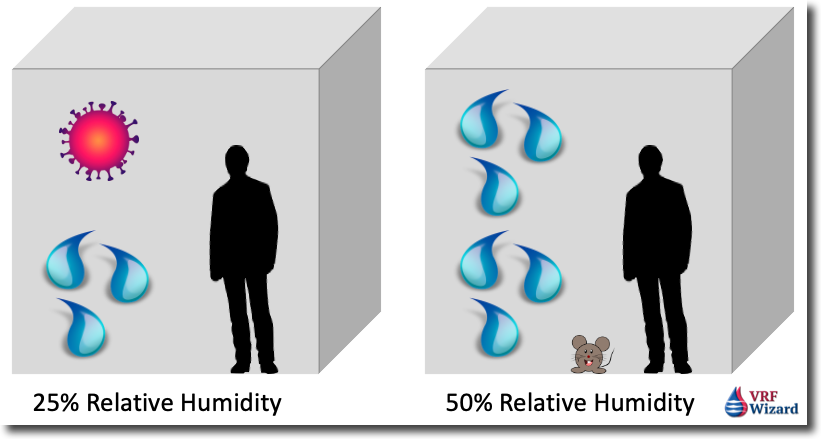
Where do Yale scientist say the sweet spot is for maintaining RH levels in indoor environments?
The Yale researchers determined that mice were capable of clearing an inhaled virus and responding with a robust immune system when they were kept at 50% relative humidity.
The mice love 50% Relative Humidity and basically reject the virus when kept in this environment. Below is a psychrometric chart showing the relative humidity curves and the sweet spot between 40 & 60% RH.
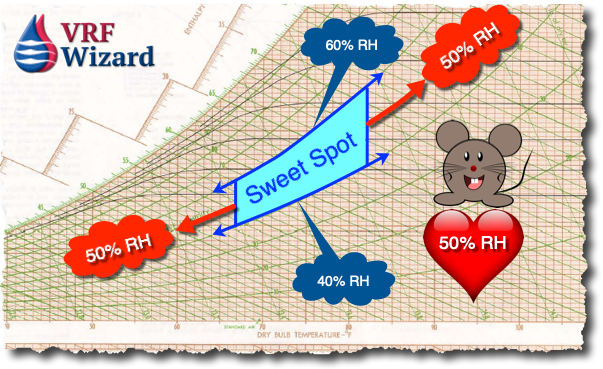
Why do we care about how mice respond, when we’re humans. But wait, there’s more, according to the National Human Genome Research Institute, “Overall, mice and humans share virtually the same set of genes. Almost every gene found in one species so far has been found in a closely related form in the other. Of the approximately 4,000 genes that have been studied, less than 10 are found in one species but not in the other.” This is why researcher use mice for many of their experiments.

It may not be practical to keep your facility at 50% RH to slow the spread of viruses due to the heavy energy penalty and cost due to the type of facility, but you may want to consider trending where your relative humidity levels are throughout the year, especially in the winter when it is known to be low and in dangerous RH territory. The addition of a humidifier to your HVAC system will help increase the RH levels.
As shown in the chart below the Influenza Virus and the Human Coronavirus is more active in the winter months and early spring, when your more likely to use your heater and reduce the Relative Humidity in the indoor environment.
According to the epidemiological studies in temperate regions, most of the respiratory viruses have seasonal oscillation of their outbreaks, a few are shown in the chart below.

Effects on Relative Humidity due to Heating
As shown in the image below when air is heated the Relative Humidity is reduced. This is because sensible heating (horizontal pink line) strikes across the relative humidity lines on the psychometric chart. The example shows air at 60% RH being heated to 70 F & 30% RH. (Relative Humidity goes from 60% RH to 30% RH due to Heating).
As air increases in temperature so does its capacity to hold moisture but heating only provides sensible heat (adds no moisture), so the corresponding relative humidity drops, creating much drier air in relationship to its temperature.
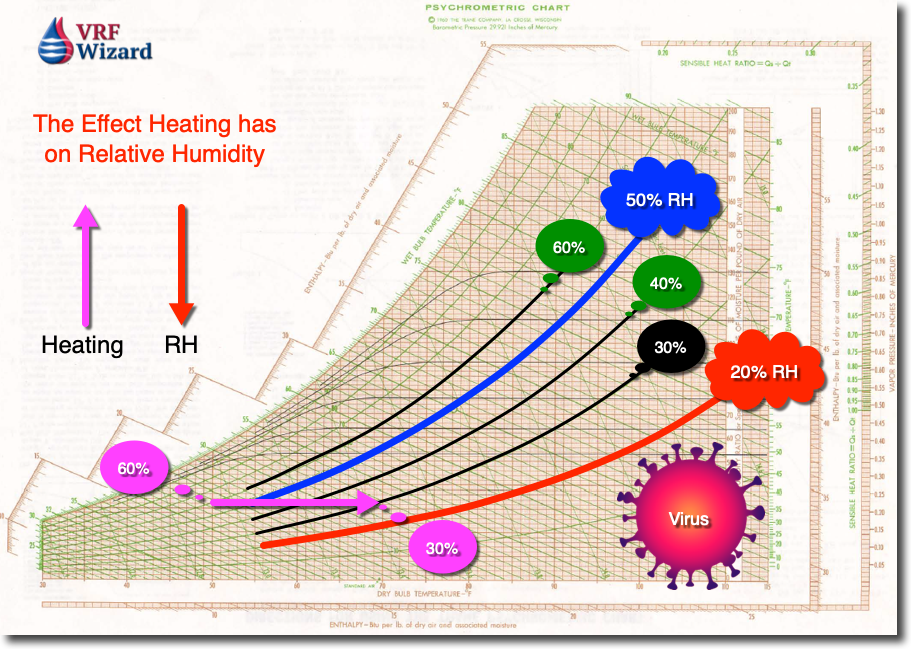
The Yale researchers indicate that when cold outdoor air is heated the relative humidity drops to about 20% RH. “This comparatively moisture-free air provides a clear path for airborne viral particles of viruses such as COVID-19”
Anything below 20% relative humidity and people begin to complain of dryness of the eyes, nose, mouth, skin and irritation of mucous membranes. Also, the rate of respiratory illnesses increases, and as the Yale scientist found in their research, the path for viruses is cleared for easier infection.
The chart below from the Yale research shows that the stability of the Respiratory Virus is at its lowest when the Relative Humidity is between 40 to 60% RH. The question to ask your HVAC technician or those responsible for your HVAC system, “what is the Relative Humidity level during the winter months?”.

ASHRAE 55-2017
ASHRAE standard 55 provides a range of temperatures that are ideal for comfort but notes that there are many factors that go into the results for anyone individual. The environmental and personal factors influencing comfort include type of clothing (clothing insulation), metabolic rate, air temperature, air velocity, radiant temperature and our favorite, Relative Humidity.
As an owner or operator of a facility, whether that be commercial or residential, you’ll most likely only have control over the environmental factors, which includes relative humidity. It’s not like you can just shutoff the Heating system to help with the RH levels.
Summary
Relative Humidity matters according to the Yale scientist, so it should probably matter to us, unless a contradictory research reveals otherwise. Whether at home or at work, your HVAC design should take into consideration relative humidity. By adding a humidifier to provide the minimum level of moisture in the air to maintain the recommended relative humidity, you provide an additional layer of protection from air borne viruses, including COVID-19 according to the Yale scientist. Remember though that the recommended range is 40 to 60% RH.
If you have small children at home you might consider buying a small room humidifier for their bedroom for the heating season, just in case this research has merit. Better safe than sorry.
Remember that this isn’t a substitute for social distancing, washing hands, wearing a mask and the latest recommendations from the CDC, as they evolve with their understanding of how best to prevent exposure.
References
Seasonality of Viruses Full Report (PDF)









